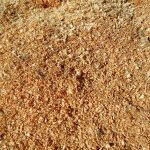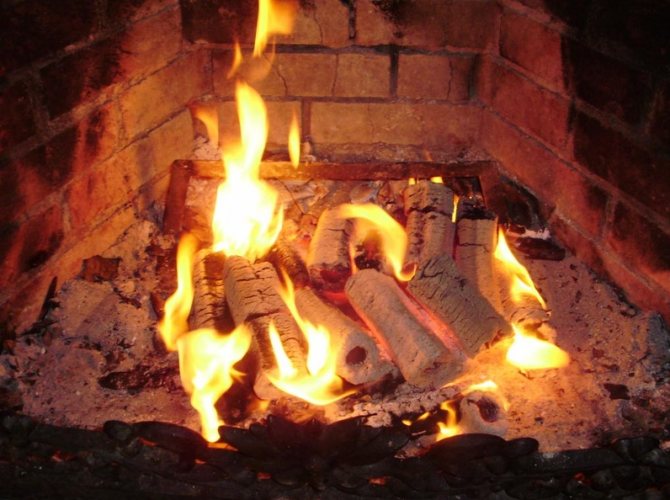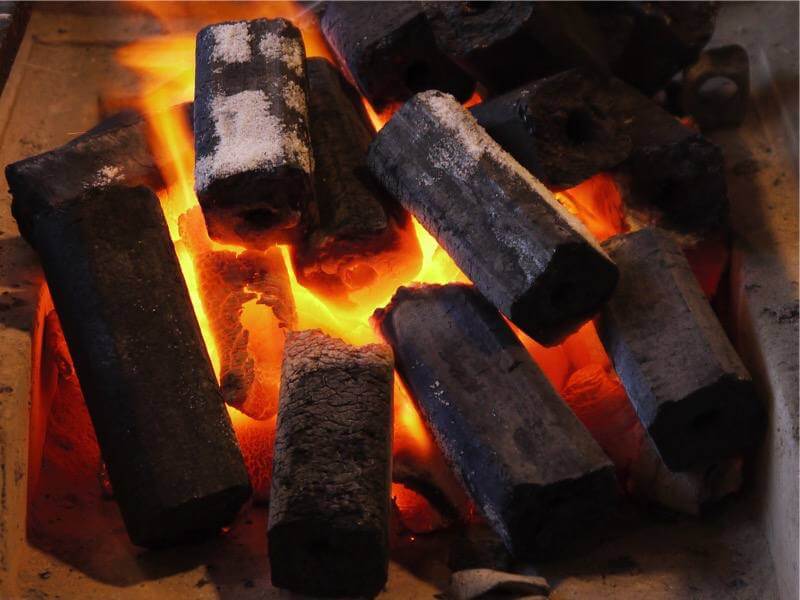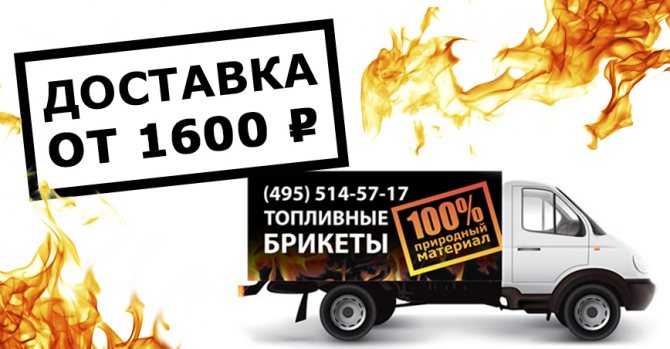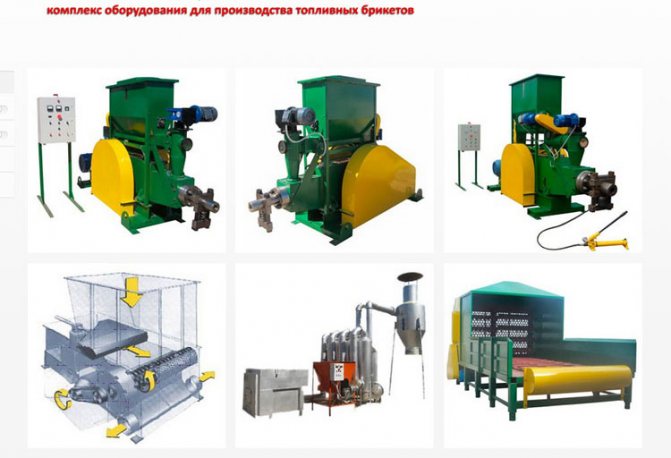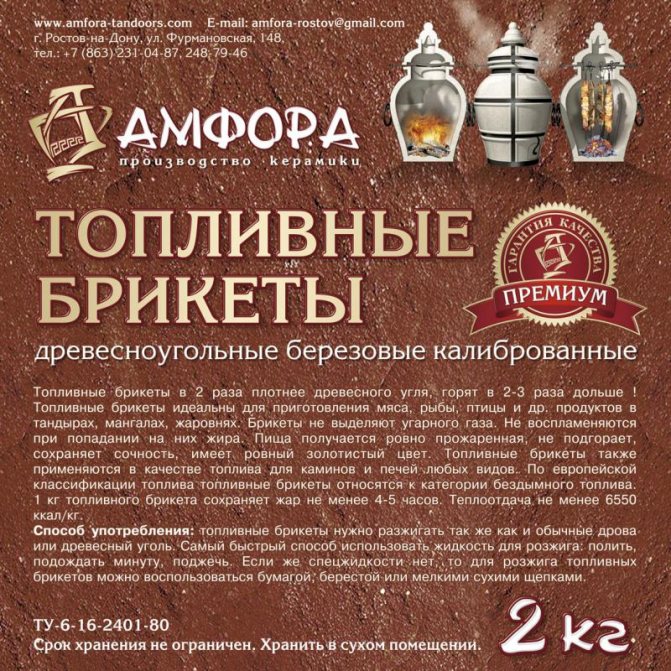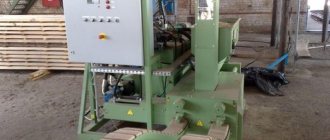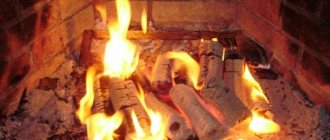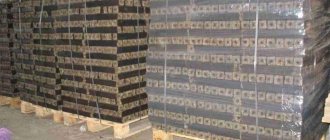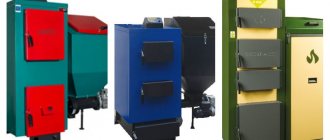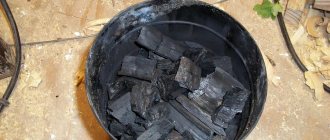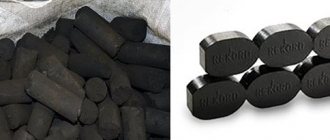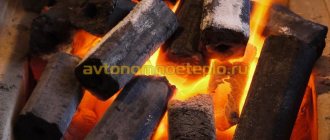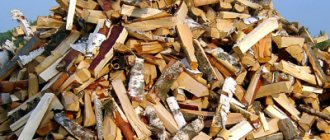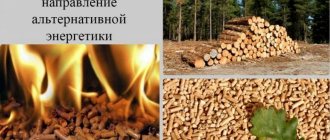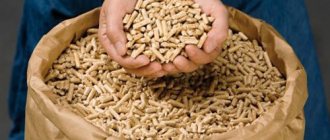The complex issue of a clean environment is now relevant in every country in the world. The search for alternative and high-quality sources of energy and fuel now occupies the minds of many. But a way out of a difficult situation has already been found! This is the use of fuel briquettes, which are created from natural resources that are forever renewable. This production will require modern technologies, and the process of grinding sawdust of various types of wood, as well as cake and straw into a homogeneous mass, will be pressed under very high pressure.
According to the business plan for the production of fuel briquettes, briquettes will be produced as a result of such a process. Or, as they can be called otherwise, biofuels. If we talk about the return of the coefficient and the energy of positive action in such briquettes, they are so great that they can be used in absolutely any place. These can be boiler houses, power plants, or ordinary heating of various houses. Other options are also possible. All fuel briquettes are like ordinary firewood. It is for this reason that they can still be called "Eurodroves".
The production of fuel briquettes will be profitable, for the reason that the invested funds will pay off unrealistically quickly. In the event that a businessman was visited by the idea of organizing the sale of biofuel, it will be necessary to create a specific business plan for the production of fuel briquettes. With the help of such a plan, there is a chance to organize a successful production and clear planning of further work.
General concept of the project
Although in our country the fuel and energy problem has not become as acute as in the states of Western Europe, the production of briquettes from sawdust is gaining momentum. The reason for this popularity of this business is the high demand for this fuel abroad and the growing popularity within the country. It is primarily due to the high calorific value of the fuel. For example, if burning ordinary firewood produces 10 MJ / kg of thermal energy, then pellets give 19 MJ / kg. In addition, the costs of organizing production are low, and woodworking waste can be used as raw materials for finished products.
The proposed business plan for the production of fuel briquettes with calculations is focused on two years and aims to create an enterprise that will allow solving important socio-economic problems:
- Organize highly profitable production.
- Create additional jobs.
- Facilitate the receipt of tax payments to the local budget.
The project is financed (the acquisition of technological equipment) by obtaining borrowed funds in the amount of 1.8 million rubles. The founder's own funds are also attracted to pay for the lease of industrial premises. The cost of the project also includes the cost of remuneration of specialists.
The main activities of the project and the timing of their implementation are indicated in this table:
| Stage / month, decade | 1 | 2 | ||||
| Dec 1 | 2 Dec | Dec 3 | Dec 1 | 2 Dec | Dec 3 | |
| Market research and potential sources of raw materials | + | + | ||||
| Carrying out the necessary approvals and registration of the enterprise | + | + | + | |||
| Signing a lease for production facilities and contracts for the supply of raw materials | + | + | ||||
| Acquisition of technology and tools | + | + | + | |||
| Renovation of the premises | + | + | + | |||
| Installation, commissioning and testing of production equipment | + | + | + | |||
| Registration of documents for the range of products | + | + | ||||
| Selection of specialists | + | + | + | |||
| Conclusion of contracts with consumers of products | + | + | + | |||
| Enterprise launch | + | |||||
The list of activities, the timing of their implementation, the given volumes of project costs can be used by the founders when negotiating with investors, representatives of administrative bodies and other interested parties.
The project life cycle is 2 years.
Features of the technology of processing straw into fuel briquettes
Consider the features of the technology for processing straw into fuel briquettes. Rye and wheat straw, rapeseed, flax, corn stalk, etc. easily pressed into briquettes. At the same time, there are no differences in pressing modes compared to pressing sawdust. In appearance, straw briquettes are also no different from sawdust briquettes. In terms of the preparation of raw materials for pressing when using straw, there are certain differences. This is due to the peculiarities of this product, primarily with stem length. Straw moisture, as a rule, is significantly lower than the moisture content of sawdust after sawing, which, of course, is a significant advantage.
Market analysis
The rapid development of the biofuel market is associated, first of all, with the energy challenges that exist in European countries and a significant rise in the cost of traditional fuels. In Russia, interest in the production of fuel briquettes began to appear at the turn of the 21st century, when the country's first pallet manufacturing enterprises were organized. In 2004, the biofuel industry developed into an independent business area, which in recent years has undergone a number of significant structural and qualitative changes.
If at the initial stage of the formation of the industry in the country there were only about 30 operating manufacturers, and of them only 3-4 trading companies were able to enter the international market, now their number has not only increased significantly. Industry magazines and reference books appeared in Russia, conferences and seminars on topical issues of the development of the alternative fuel market began to be held.
These efforts have led to the fact that since 2002 the number of producers of eurodrops has doubled annually. According to experts, this trend will continue in the next period. This happens even under such conditions that domestic enterprises for the production of briquettes are constantly experiencing a shortage of raw materials. If this fact in itself is paradoxical for Russia, then other restraining barriers are quite natural: the country does not yet have a well-established production of special equipment, there are no qualified specialists, and the entrepreneurs themselves lack experience in operating this product market.
The consequence of all these circumstances is a constant rise in the cost (by 5-80%, depending on the region) purchase prices for fuel briquettes.
Abroad, Russian products in this industry cost 80-230 euros per 1 ton. This is facilitated by the gradual accumulation of experience by domestic entrepreneurs in the industry market, wide popularization of this type of fuel among the population, high profitability of the production itself (at least 15%), active investment in the domestic industry of foreign companies' funds.
At the moment, the colossal potential of domestic bioenergy is undeniable. But, according to experts, in order for the market to continue to grow, it is necessary to comply with two main conditions:
- It requires a transition from competition between domestic producers to cooperation, which will lead to the exchange of experience and knowledge.
- State support for the industry is needed.
To date, certain steps have already been taken in this direction. Thus, the Federal Energy Strategy for the period up to 2020 was adopted, which provides for the creation of a more favorable investment climate for producers of renewable energy sources, the widespread introduction of modern technologies for the production of biofuels,organization of production of domestic equipment for this industry.
It is expected that as a result of the implementation of the measures of this strategy in 2020, the share of renewable energy sources in the country's fuel and energy complex will reach 0.6% (in European countries, this figure is going to be increased to 15%). There is a special commission in the State Duma of the Russian Federation that is engaged in the development of draft laws in the field of alternative energy.
In short, bioenergy in Russia has the necessary prospects to soon become a developed, environmentally friendly, competitive and profitable branch of the national economy. In the foreseeable future, the demand for fuel briquettes will only increase, which will lead to increased competition and the survival of only efficient producers in the market, the number of which will also grow.
Analysis of potential consumers and sales markets
The most attractive markets for briquettes are Sweden and Denmark, however, these are not the only consumers, while developing the business plan, domestic markets were also taken into account. When focusing on export, it is worth paying attention to the high quality of the products, since the European consumer is used to seeing and using exclusively high-quality goods.
Of great importance is the absence of contamination on the outer surface and an even cut of the briquette. The octagonal shape is the most rational for storage and packaging. Western consumers most often use sawdust briquettes, but trends indicate an increase in sales of sunflower and straw.
In the spring-summer season, there is a slight decrease in the price of fuel briquettes.
From the beginning of August, the price increases, and by October it is finally formed.
Organizational and legal form and taxes
An enterprise for the production of fuel briquettes is created within the framework of the legal form of LLC (limited liability company). This will provide an opportunity to cooperate with legal entities and significantly expand the capabilities of the enterprise for the sale of products.
Main taxes paid:
| Tax | Applicable tax base | Periodicity | The amount of the bet |
| By the amount of profit | The amount of profit received | M-c | 20% |
| VAT | Amount of accrued VAT | M-c | 18% |
| On property | The amount of the purchased property | According to the schedule | 2,2% |
| Fit | Phot | M-c | 13% |
| Social payments | Phot | M-c | 34% |
Business organization by stages
Company registration
The workshop can work in the IP format, but if it is organized as a partnership or its owner plans to work with large suppliers and buyers, it is better to immediately register an LLC.
The most suitable OKVED code is 16.29.15, implying the production of fuel briquettes and pellets.
You will also need a work permit from the fire department and contracts with local utilities.
Search for premises
For organizing a workshop, a room outside the city or in an industrial zone within the city limits is suitable. It must meet some requirements:
- an area of at least 150 m2;
- equipment with all necessary communications, including 380 V power supply;
- compliance with the rules imposed by the fire safety authorities;
- division into production, warehouse and administrative parts.
Equipment
Elements of a standard automatic line for the production of fuel briquettes:
- crusher or chopper;
- sifter;
- the first dryer;
- feeding auger;
- pressing equipment;
- second dryer;
- storage tank;
- packing unit.
All components of the line can be purchased as a set or separately.
You also need a mini-loader and a certain amount of furniture - workshop, office and staff rest.
Raw materials
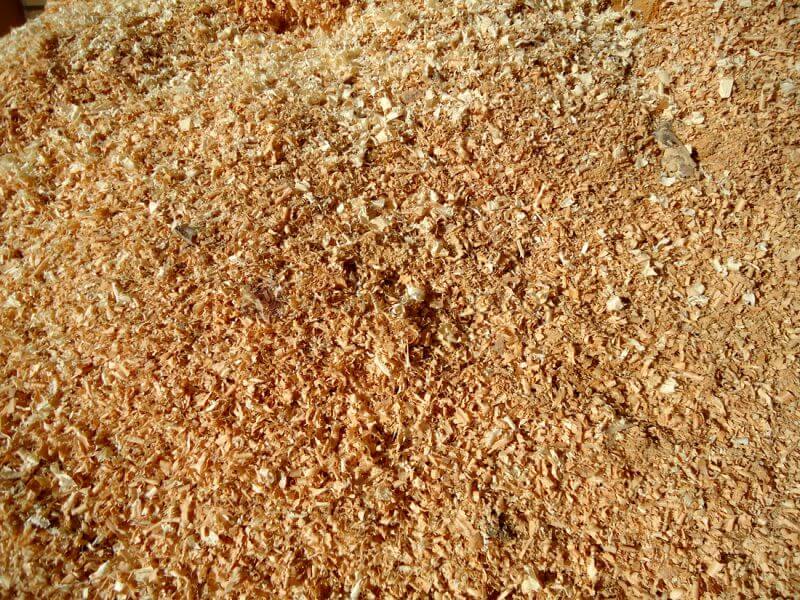
For the production of fuel briquettes, supplies of wood, grain, peat or other waste are needed.It is possible to conclude contracts for their supply with local agricultural, municipal, mining enterprises.
State formation
The staff should include:
- manager;
- shift supervisor;
- workers (3 people for each work shift);
- forklift drivers (one per shift).
An advertising campaign can be carried out by a manager, accounting is entrusted to a visiting specialist, and one of the workers performs the functions of a cleaner of industrial premises. Security issues are decided by the local private security company. You can also hire 3-4 guards working in shifts.
Production Description
Almost any woodworking waste can serve as a raw material for the production of pellets: shavings, slabs, wane, trunks, lumpy waste and even foliage. Hulls of grain crops, straw, peat can also be used. Modern technologies for their processing allow 4 cu. m of waste to receive on average at least 1 cubic meter. m of finished products. At the same time, special requirements are imposed on the quality of raw materials: fractions should be no more than 3 mm in size and a moisture level not higher than 8-12%. When these thresholds are exceeded, the raw material is subjected to additional grinding and drying.
The new enterprise will use a multi-stage technology for the production of fuel briquettes.
- Preparation of raw materials. It consists in crushing wood waste in a chipper until chips of 5-30 mm in size come out and sending it to a shredder dryer, where the raw material is brought to a fraction of up to 1 mm in size.
- Direction of crushed waste fractions to a screw press, where briquettes are formed without the use of binders. Due to the presence of legnin in the wood, at the exit from the press, pellets of rectangular or cylindrical shape with a density of 1.1-1.2 t / m3 are obtained. m and sizes 10-30 by 60-75 centimeters.
The enterprise will use a belt conveyor that will supply raw materials to the equipment for grinding and drying.
How to make briquettes with your own hands?
To get an acceptable result, you will definitely need equipment for manufacturing - this is a straw chopper, which will allow you to crush the biomass at least to a size of 20 mm and a device for pressing briquettes. One of the options for a shredder with a capacity of 30 to 50 kg of cut per hour is shown in the figure:
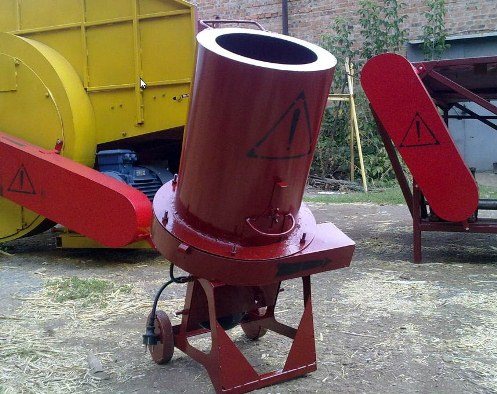

Sometimes there are tips for chopping straw with a chainsaw, knife, and even an ax. Such recommendations are written by those who have never tried to do it with their own hands. Try to cut 30 kg of 20 mm straw with a knife and you will immediately understand what the salt is.
It is still better to use a straw chopper, such as in the video:
Next, we take ordinary dry clay without stones and mix it with a straw chop, it will serve as a binder. There are no other options, since a homemade pressing device will not be able to create the pressure at which lignin is released. Everyone recommends keeping the proportions of 1 kg of clay per 10 kg of raw materials, but we advise you to experiment and, if possible, reduce the proportion of clay. The fact is that it does not burn and excess ash will form in the boiler furnace. Add a little water to the resulting substance and mix thoroughly.
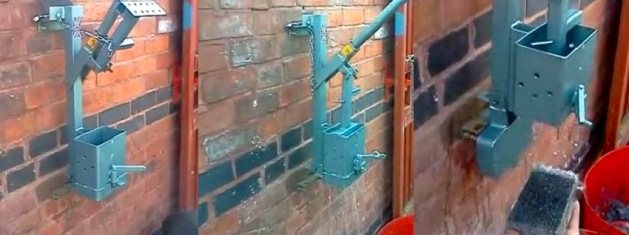

Home manual briquette press can be purchased, ordered from craftsmen, or made by yourself. In fact, for someone with plumbing skills and experience as a welder, this will not be a problem. If we are talking about a small extruder, whose performance is incomparably higher, then it is quite difficult to assemble it on your own, although it is possible. What a hand press is and how to make it is shown in the video:
Important! When working on a screw press (extruder), you do not need to add clay and water to the raw material!
When the mixture is finished, you can start producing briquettes.The mixture is put into the mold, after which you must press the lever and wait until the water drains. At the end, the finished "brick" is taken out of the mold and sent to dry in the fresh air and the sun.
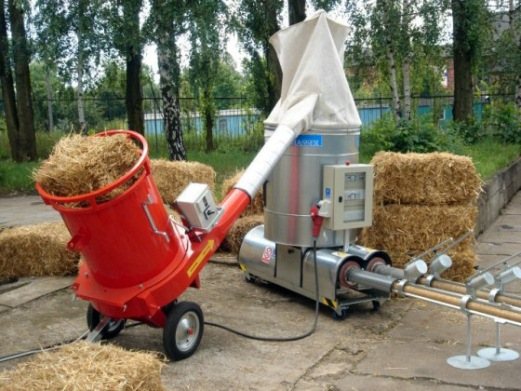

It is quite possible to produce such fuel at home for your own use. Another thing is that hand-made straw briquettes may not meet your expectations in terms of heat transfer, because they are not as well compressed as factory ones and contain a lot of moisture. In addition, the process itself is quite laborious and will take a lot of time. On the other hand, it is a good use for biomass if you have enough of it at home. With the current high cost of energy, homemade briquettes are not a bad solution.
Technological equipment
This business plan provides for the acquisition of a technological line that provides a full production cycle for the production of fuel briquettes. The composition of the equipment and its cost are shown in the table:
| Equipment type | Price (in rubles) |
| Dryer | 100 000 |
| Screw press | 250 000 |
| Storage hopper | 100 000 |
| Crusher | 100 000 |
| Feed auger | 80 000 |
| Ventilation system, taking into account installation services | 3 600 (per 1 sq. M) |
| Processing line operation control panel | 10 000 |
| Heat generator | 150 000 |
| Conveyor line | 200 000 |
| Cyclone | 30 000 |
| Pellet packing equipment | 800 000 |
| Libra | 5 000 |
| Total | 1 825 000 |
At the initial stage of the operation of the enterprise, it is envisaged to use woodworking waste received from companies in the region free of charge (instead of services for the removal of production waste). The waste will also be used as fuel for the heat generating plant.
Production line formation and raw material selection
Capital investments will be required to create a production line and install equipment:
- dryer - from 100,000 rubles;
- screw press - from 250,000 rubles;
- crusher - from 100,000 rubles;
- feed auger - up to 80,000 rubles;
- ventilation equipment with installation work - 3 600 rubles. per m²;
- storage bin - 70-100,000;
- cyclone - 20-30,000 rubles;
- heat generator - 150,000 rubles;
- control panel - 10,000 rubles;
- transporter - 200,000 rubles;
- packing machine - 400-800,000 rubles;
- electronic scales - from 5,000 rubles.
When drawing up a business plan for the production of briquettes, it is necessary to take into account the cost of sawdust, which differs depending on the region and can vary from 1 to 20 rubles. for 1 m³. It is not uncommon to find announcements from furniture and lumber manufacturers, who, faced with the problem of waste disposal, offer to pick them up. The same sawdust can be used as fuel for a heat generator.
A good alternative to wood waste in the production of fuel briquettes can be agricultural waste (husk and straw of grain crops, corn, rice, sunflower). Due to its physical characteristics, such waste can be a fuel source for a large number of rural areas, especially those that do not have large forests.
Straw is one of the cheapest renewable energy sources. In the process of processing agricultural products, a very significant proportion of waste is generated. The table shows the share of waste per 1 ton of manufactured products.
Specific gravity of agricultural waste
| Type of crops | Waste type | Remains of production per 1 ton of finished product |
| Wheat | Husk, straw, bran | waste - 2 t |
| Rice | Husk, straw, bran | 1.5 tons of straw and 0.2 tons of pericarp |
| Barley | Bran, straw | 1.5 t of straw |
| Corn | Leaves, stem | 2 tons of leaves and 4 tons of stems |
Agricultural waste has high energy characteristics. In the process of burning wheat straw, a calorific value of 17-18 MJ / kg is formed, maize - 18 MJ / kg, rape straw - 16-17 MJ / kg. When it comes to the use of wood, one should focus on indicators in the range of 17.5-19 MJ / kg.
In most countries, agricultural waste is used as livestock feed, fertilizer, but often simply rots.
In the role of fuel, waste is used in its natural state, less often chopped, dried and compacted. This form has a number of disadvantages, including the costs of storage, transportation and seasonality of the harvest.
Straw differs from sawdust by a large amount of volatile substances, low density and burning time. Compared to wood waste, they contain more potassium, ash and chlorine.
Straw processed into briquettes solves a number of problems. Straw briquettes have a calorific value per unit volume 10 times that of the feedstock. Also, the issues of storage, regardless of the weather and season, transportation, automation of the loading process into various combustion devices are solved. The most effective method is auger pressing, which makes it possible to obtain fuel briquettes with increased resistance to moisture and high density. Such a briquette does not differ from wood waste products and has the following characteristics: working humidity - 4.7%, working sulfur - 0.01%, analytical ash content - 5.5%, heat of combustion - 4480 kcal / kg, fuel equivalent - 0 , 59.
Staff
To ensure the design parameters of production at the initial stage of the project, the following employees are involved:
- Process engineer.
- Accountant manager.
- Locksmith for the maintenance of technological equipment.
- Workers (4 people).
The duties of the head of the enterprise are performed by the founder.
Calculation of the salary fund for specialists:
| Position | Monthly salary (in rubles) | Labor costs per year (in rubles) |
| Process Engineer | 25 000 | 300 000 |
| Manager | 15 000 | 180 000 |
| Technological equipment service technician | 20 000 | 240 000 |
| Workers (4 people) | 20 000 | 960 000 |
| Total | 140 000 | 1 680 000 |
The selection of specialists is carried out on the basis of standard qualification requirements established for these professions, and taking into account the experience of work on the technological equipment used at the enterprise.
Investment and profit
So, to summarize the initial costs. On average, you will have to pay about 1.5 million rubles for all the equipment, payments to workers will amount to about 140 thousand per month, and the cost of premises will amount to an average of 20 thousand rubles. You should also take into account the cost of raw materials, which costs about 1000 rubles per 70 cubic meters.
If you calculate all the costs of starting a business, you get about 2 million rubles.
Fortunately, such a business pays off quickly, since on average, the percentage of profit from all income is almost 50%. If you try to take free raw materials and use a two-shift work schedule, then all costs will pay off in about six months.
for 550 rubles, from our partners, with a quality guarantee. In the open access, on the Internet, it is not. Business plan content: 1. Confidentiality 2. Summary 3. Stages of the project 4. Characteristics of the object 5. Marketing plan 6. Technical and economic data of equipment 7. Financial plan 8. Risk assessment 9. Financial and economic justification of investments 10. Conclusions
On the video: Production of eurodrops in the Irkutsk region
Financial plan
The main expenses for the implementation of the project are:
| Articles | number | The amount of expenses per month | Costs per year | One time purchase | Total |
| Purchase of technological equipment (credit funds) | 1 line | 1 825 000 | 1 825 000 | ||
| Lease of industrial premises (own funds of the founder) | 120 sq. m | 20 000 | 240 000 | 240 000 | |
| Remuneration for employees (from the founder's own funds, after entering the break-even mode - from the profit of the enterprise) | 7 people | 140 000 | 168 000 | 168 000 | |
| Depreciation and other expenses (including payment of interest on a loan - 14%) | 21 300 | 255 500 | 255 500 | ||
| Total | 181 300 | 2 175 500 | 1 825 000 | 4 181 800 |
This example of a business plan is calculated based on the following conditions for the functioning of the enterprise:
- The volume of production of fuel briquettes per shift - 4 tons with two-shift work for 8 hours.
- The volume of production of fuel briquettes per month - 80 tons.
- The weighted average wholesale cost of briquettes is 5,000 rubles. per ton of finished products.
Thus, the volume of gross proceeds of the enterprise with one hundred percent sales of products will amount to 400,000 rubles per month. At the established rates of expenses for opening an enterprise, investments will pay off no later than 6 months after the start of the project.
Costs
The cost of producing wood fuel briquettes will look like this:
- Purchase of equipment - 2,850,000 rubles;
- Purchase of the necessary raw materials - 150,000 rubles;
- Unforeseen expenses - 25,000 rubles;
- Rent or purchase of premises - 200,000 rubles;
- Business registration - 15,000 rubles;
- The salary of all personnel as a whole is 570,000 rubles;
- Utility bills - 55,000 rubles.
An accurate calculation of the profit you can expect.
In order to produce a ton of fuel briquettes, four cubic meters of raw material costing 850 rubles will be required. In that case, taking into account three work shifts of eight hours, it will actually be possible to produce ten tons of fuel briquettes. The volume for the month will be three hundred tons. 4600 rubles is the market price of one ton of Eurowood. If we take these costs into account, it turns out that the organization is industrial, with a net profit of three hundred thousand rubles.
Marketing and advertising
Analysis of the market situation in the production of fuel briquettes shows a rapid growth in the number of enterprises and a constant increase in demand for these products. To create a positive reputation of the company, it is planned to organize the following promotional events:
- Prepare publications in local media.
- Develop a targeted advertising scheme by sending commercial offers to specialized trade organizations that sell fuel.
- Activate consumer demand by developing and running promotions.
The main marketing resource of the enterprise is the high quality of its products, which can be profitably purchased directly from the manufacturer at the prices of the first supplier.
Production
The production process, as we have already said, is quite simple, even though it takes place at home.
To make briquettes for heating stoves with your own hands, you need:
- Prepare high-quality raw materials, grind it to the desired consistency, dry it. In order to improve the quality of combustion, paper can be added to any raw material.
- If necessary, add a binding element (clay, lignin), add water, load into the press machine.
- Press the product into a suitable shape at high pressure and preferably at high temperature.
- Dry the finished product, if possible, pack it to protect it from external factors. When drying, you can use rags and paper that can pull out the remaining moisture from the briquette.
After completing all these works, you will receive excellent fuel, which can be used to quickly and easily heat the bath, heat the house. At the same time, over a long period of time, you will feel the benefits and savings from the use of such eco-trees.
Note that during operation, you should try to achieve a moisture content of the briquettes of no more than 10-12%, so that they burn perfectly. Industrial briquettes have a moisture content of less than 10%.
To be convinced of the excellent characteristics of this type of fuel, you can buy yourself some Euro briquettes for testing in any store. At the same time, to create a suitable atmosphere, you can sometimes light a fireplace or stove with ordinary wood, because the use of different types of fuel is not mutually exclusive.
Eventually
Taking into account the existing trends in the heating materials market, this project has good prospects for becoming a business that will consistently make a profit.
The most profitable option for organizing the production of fuel briquettes is its creation on the basis of an already operating woodworking enterprise, which will make it possible to have our own and reliable source of raw materials for the manufacture of pellets.
The company, created and functioning as a limited liability company, has the opportunity to sell its products abroad, which will further increase the profitability of the business.
Straw for energy production
Using straw as fuel in boilers / heat exchangers (boilers) can corrode the metal surfaces of the heat exchangers. But there are certain manufacturers of boilers (boilers), which give a guarantee for the long-term use of their boilers, they are designed specifically for burning straw.
Straw is a neutral CO2-generating fuel, which is why it can play an important role in the chain of generation and supply of green, that is, environmentally friendly energy. In addition, straw is a renewable resource, because as long as grain crops are grown, there will be straw. For example, in Denmark such a vegetable source has been used as an energy fuel since the 70s, and it should be noted - very successfully. Straw used as fuel usually contains 14-20% water, which evaporates during combustion.
The dry matter that remains is less than 50% carbon, 6% hydrogen, 42% oxygen, and small amounts of nitrogen, sulfur, silicon and other minerals, including alkaline (sodium and potassium based) and chlorides. It has long been known that straw collected from the field was exposed to rain on the eve of harvesting and has a reduced content of substances that cause corrosion. But often the indicator of ash content is used as a factor in reducing the export price of straw pellets, but in fact, ash content does not have a particular effect on the heat production process. The only thing that needs to be considered when using them in combustion boilers is the removal of ash and slag.
Slags that are formed in the combustion chamber when burning organic waste (sunflower husks, straw pellets) often resemble pieces of stone or glass in appearance. The combustion chamber can be easily cleaned of slags.

